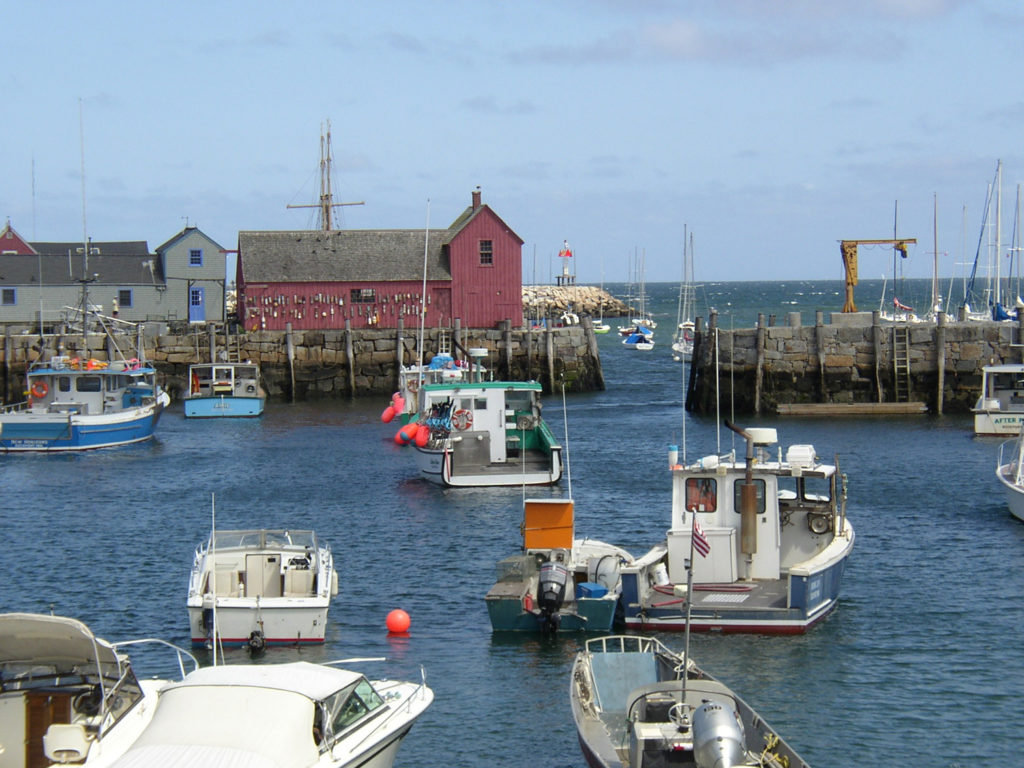Two weeks ago, I attended the Northeast Regional Planning Body (RPB) meeting in Gloucester, MA, along with Island Institute Marine Programs Director Nick Battista, and Maine lobster fisherman Richard Nelson. The meeting was held at the Greater Atlantic Regional Fisheries Office of the National Marine Fisheries Service with the purpose of hearing from RPB members about how their organizations are using the Northeast Ocean Plan and Data Portal, reviewing the progress of implementing the plan, obtaining public input, and deciding on next steps through the end of 2017.
Before jumping into the meeting details, some of you might be wondering what the RPB is and why it is important. The RPB was formed in November 2012 under the National Ocean Policy and is the body responsible for developing and overseeing the implementation of the Northeast Ocean Plan. The Northeast RPB includes representatives from the six New England states, nine federal agencies, and federally recognized tribes in New England. The RPB has no authority to create new regulations, rather its responsibility is to:
- Create an ocean plan (completed!)
- Oversee Plan Implementation
- Create opportunities for the public to engage in these conversations (ongoing)
This past December, the Northeast Ocean Plan was officially approved and completed, so we are now in the implementation phase. Because we’re the first region in the U.S. to have an ocean plan, we’re plotting uncharted waters.
- What does implementation of the Plan actually look like?
- How will federal agencies use the Plan?
- How will new data be incorporated into the Plan?
One way to detect Plan implementation is to track the usage of the Northeast Data Portal. The average monthly visitor rate has increased almost three-fold since plan certification in December 2016, and there were over 8,000 unique visitors in April 2017, which was the highest month ever. While many of the daily/weekly spikes may be associated with agency announcements and events, this is very encouraging news. So, what does it all mean? It means that the Data Portal and Plan are already getting the attention and use they were designed for, leading to better decisions which may ultimately lead to a healthier ocean.
So, what does it all mean? It means that the Data Portal and Plan are already getting the attention and use they were designed for, leading to better decisions which may ultimately lead to a healthier ocean.
One new concept that was discussed at the meeting was measuring the Ocean Health Index (OHI) for the New England region. OHI defines a healthy ocean as “one that sustainably delivers a range of benefits to people now and in the future.” This index is adapted to a chosen region, and stakeholders can help define the parameters used to measure the health of the ocean.
This is encouraging news for the region, as a healthy ocean means so much more to people than the dollars earned from ocean products or ecological diversity. There are physical, economic, and social elements of the ocean and the communities who depend on it that also help determine the health of these coastal areas. While this sense of human spirit and consciousness can be difficult to capture and measure, exploring the ocean’s role in this way will be a critical tool for ocean planners to use to address and meet the needs of the Northeast as we move forward.
For more about this idea of a “sense of place,” see Fisherman Richard Nelson’s blog piece here.
For more information on the Ocean Health Index, check out the OHI website.


